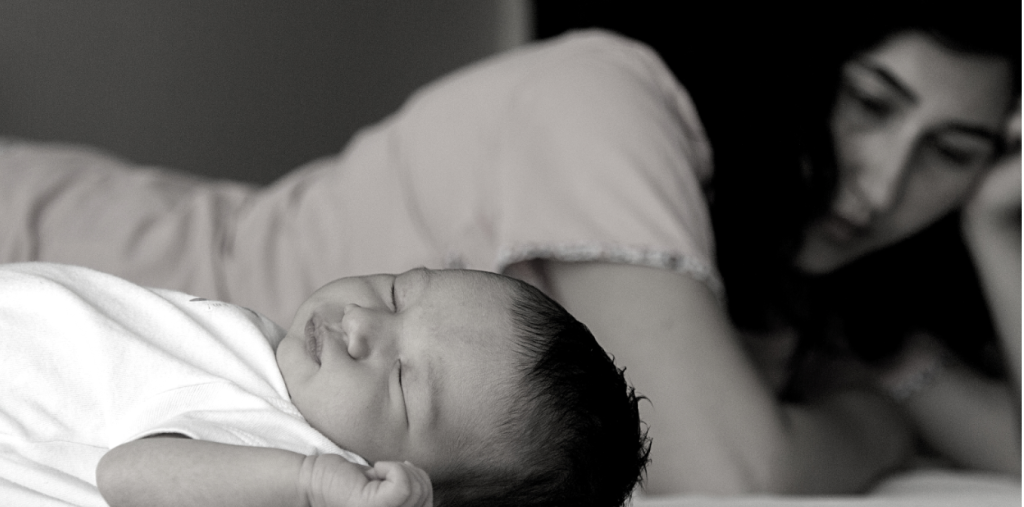To speak with experience requires one having taken the journey. To speak with knowledge requires teachers. No one is a more experienced teacher of the joys and challenges of motherhood than mothers themselves!
There are endless experiences of motherhood: from tranquil peaceful moments, to peak triumphs, and tension-filled ordeals. As both a family doctor and perinatal psychotherapist, I have had the privilege of partnering with hundreds of women as they enter motherhood. Each has her own unique experience.
For over two decades I have treated women with postpartum depression (PPD) and postpartum anxiety (PPA). These are experiences that I wish for no one to endure, yet 1 out of 7 moms develop PPD and 1 in 10 develop PPA. Unfortunately, perinatal mood and anxiety disorders are common.
Women describe PPD as feeling overwhelmed, sad or numb, irritable, empty, exhausted, or feeling like a failure as a mother. PPD robs moms of their ability to take pleasure in sweet moments with their baby. It can even block your ability to bond with your baby.
Often PPD dramatically amplifies relationship distress in a couple. Maternal depression increases the risk of a partner developing PPD. (One in ten dads and adoptive moms get PPD too!) Many moms don’t even realize that the cause of what they’re feeling is depression. Instead, they withdraw from support and blame themselves or their partners, rather than the depression they are enduring.
Over the past 20 years our knowledge of treatments, including natural options, counseling, and medications, has improved dramatically. Perhaps even more importantly, multiple studies have proven that specific strategies can prevent perinatal depression. Contrary to popular belief, hormonal changes are not the sole cause of PPD. Instead there are many contributing factors responsible: prolonged sleep deprivation, stress, life changes, isolation, loss of one’s prior life, etc.
The good news is that because there are so many causes coming together to create it, we can make numerous interventions to treat PPD and prevent it. Let’s start with the basics. Getting adequate sleep is essential for wellness. That’s easier said than done! That’s why I teach over 20 different methods for improving your sleep quality and quantity. Some techniques are as simple as giving your baby a ‘dream feed’ each night. Just this one simple routine of waking a baby to feed last thing before you or your partner goes to bed at night, has been shown to increase parental sleep and reduce PPD.
There are numerous other techniques that can help, including getting twenty minutes of morning sunshine daily or developing a daily practice of gratitude. Even certain foods can reduce PPD: such as 1) Omega-3 fatty acids found in fish oil or chia seeds, 2) Vitamin D from milk, supplements or sunshine, or 3) Selenium – just one Brazil nut a day is all you need to get the recommended amount to boost your mood.
There are also many strategies that can reduce postpartum anxiety (PPA). Spending at least 30 minutes a day doing something you enjoy away from your baby (while a trusted person watches them), allows your maternal vigilance to rest. This is so important when you are otherwise responsible for your baby 24/7. When you give your protective ‘baby radar’ a break, you create space to be your ‘old self’. If separating from your baby feels difficult, start with ten minute breaks daily and gradually increase.
You can also reduce your stress by practicing self care. Specific self-care strategies, such as taking periodic 1-minute pauses to breathe, can reduce your stress level and improve your energy level.
In addition, there are techniques to increase teamwork in a couple. When your partner actively assists you to get more sleep and take things off your plate you feel more supported and understood.
Knowing what predictable pitfalls commonly trigger depression and how to side-step them, can make a huge difference in your entire family’s wellness and contentment. These preventative measures can be found in medical and psychology research journals, but every woman should have the tools to thrive through motherhood. In my masterclass I teach these strategies in bite-sized chunks for busy moms. Each of these techniques helps just a little bit, but when you put them all together in one simple program, you create a powerful force for wellbeing in motherhood. This is how you get off to a great start! That’s the purpose of the Motherhood Survival Manual Masterclass.

No Comments yet!